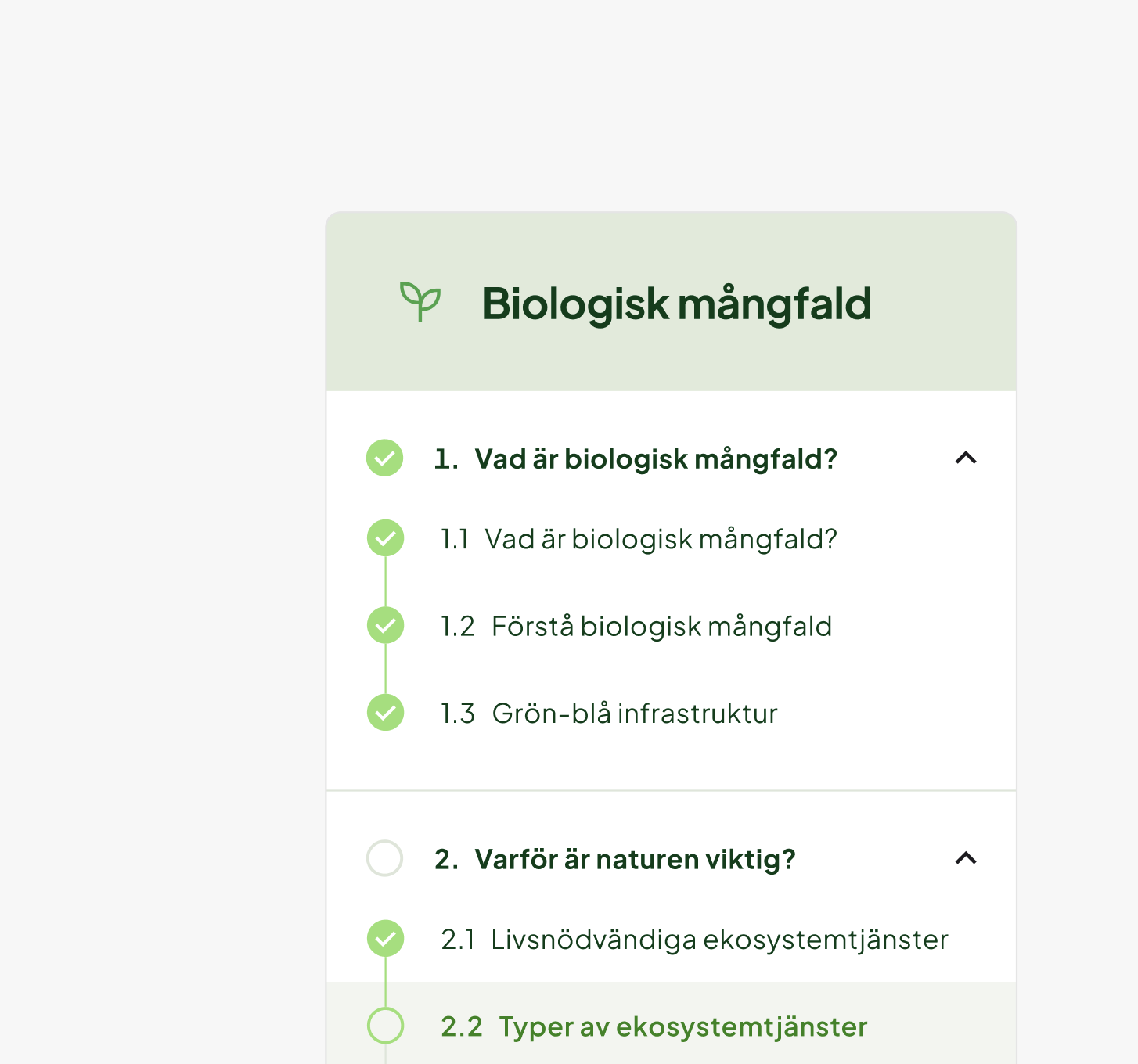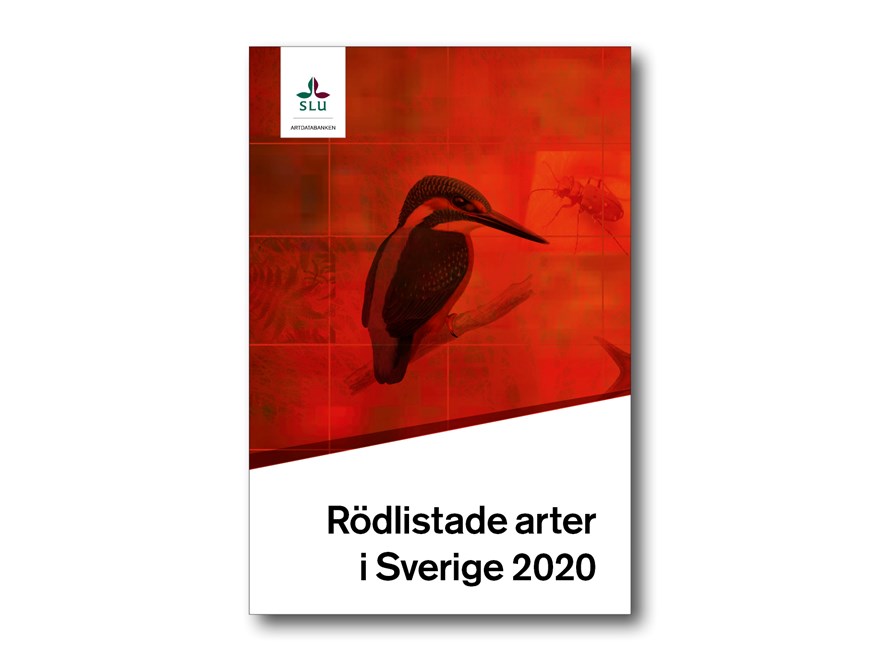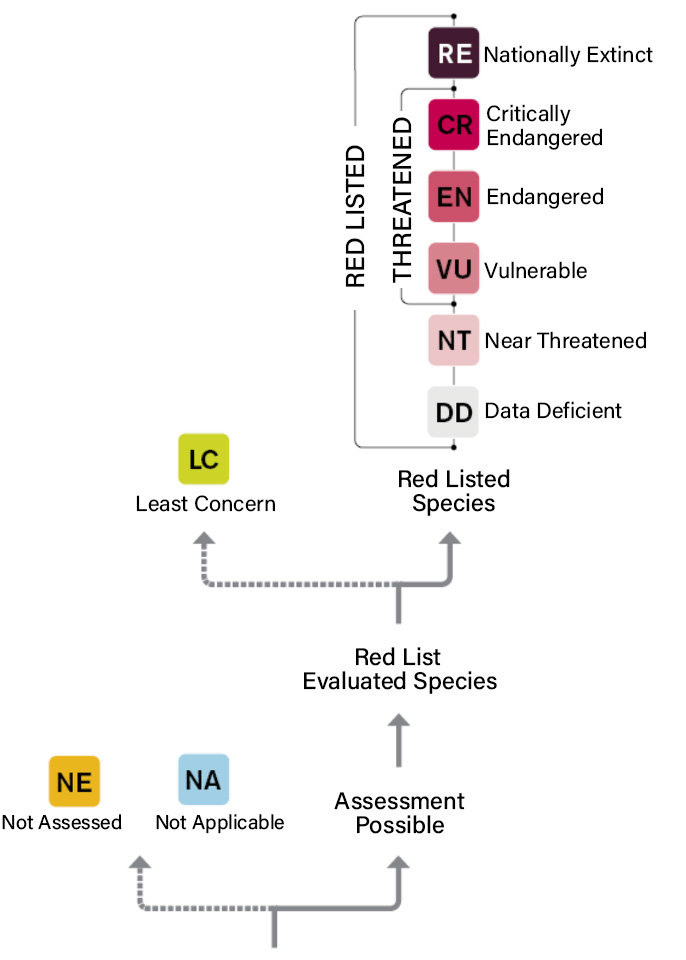This is how it works if you want to continue on another device
To save your progress if you want to continue on another device, there are several options. Copy or email a link, or read provided QR-code.
When you started the course, you will be able to continue on another device.
-
Read QR-code
Scan the following QR-code with your phone to continue where you left.
-
Copied
- Or email the link to yourself

Red Listing - Risk of Extinction
The Red List is an assessment of different species’ risk of becoming extinct. The aim is to identify and assess the state of different species’, their risk of decline or extinction, and the measures needed to improve their situation.
The status of species is classified into seven categories, of which the top ones; Vulnerable, Critically Endangered and Acutely Endangered are the ones that are collectively referred to as threatened. Species with stable populations are considered viable.

The latest Swedish Red List was released in 2020. New additions to the list included the hedgehog (NT, near threatened), the mountain hare (NT, near threatened), and the Baltic harbor porpoise (CR, critically endangered).
The Red List follows an international standard set by the International Union for Conservation of Nature (IUCN). In Sweden, the national Red List is the responsibility of the Swedish Species Information Centre, coordinated by the Swedish University of Agricultural Sciences (SLU). The Red List is revised every five years. The latest Red List was released in 2020.

A common species can end up on the Red List if its population has significantly decreased over time. The Red List can also include species whose populations have not decreased but where the existing populations are small and the species is rare.

Species included in the Swedish Red List are assessed according to internationally recognized criteria set by the IUCN.
